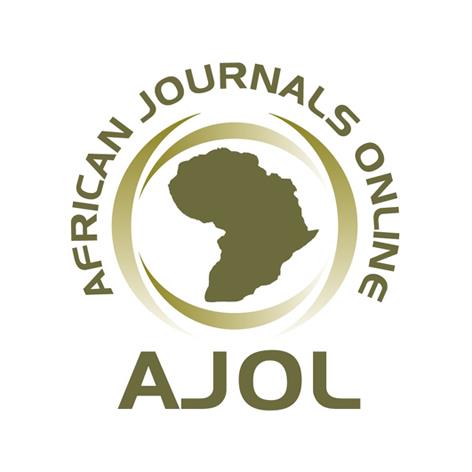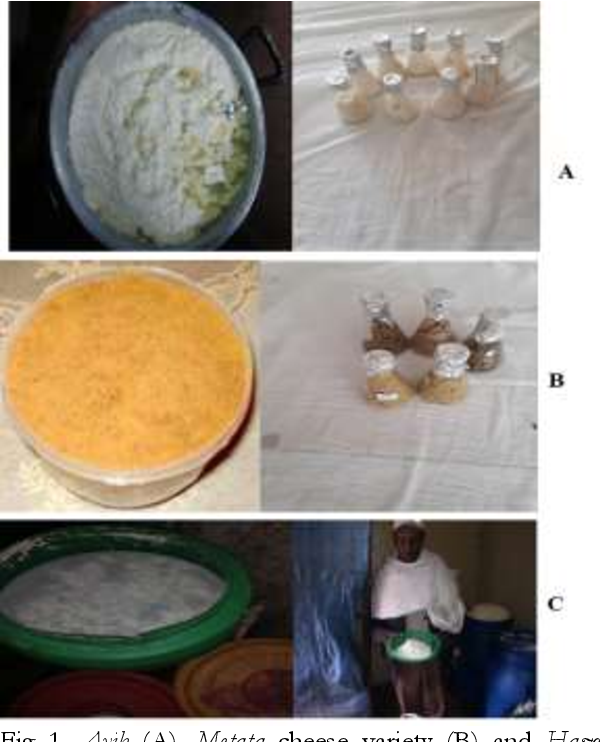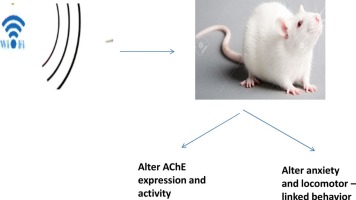Relationships between Family Communication and Disruptive Behaviors of Adolescents in Harari Regional State
Downloads
Background: Adolescent disruptive behavior is one of the most commonly reported challenges across the world in general and in Ethiopia in particular. However, the problem has not received the attention it deserves from researchers.
Objectives: the study was aimed at examining the level of disruptive behaviors and its relationship with family communication and related other factors among adolescents. Materials and Methods: Data were collected from a randomly selected 304 adolescent students (155 males, 149 females) using 'the Problem Behavior Frequency Questionnaire', and 'The Family Communication Scale’. Correlational research design was employed to address the objectives of the study. Correlational analysis, t-test, and regression analysis were conducted to examine relationships and differences.
Results: The statistical analysis yielded that there is a widespread problem of disruptive behaviors among adolescents in the study area. Likewise, a statistically significant negative relationship (r = –0.51, P < 0.001) was found between family communication and disruptive behaviors. Moreover, family communication, family structures, and sex as variables contribute significantly (P < 0.05) to disruptive behaviors in adolescents. Although delinquency does not differ significantly for male and female adolescents, as a group, male adolescents engage in more physical aggressions than female adolescents do (P < 0.05). However, the results showed that female adolescents engage in more relational aggression than their males counterparts do (P < 0.05).
Conclusion: The results of this study revealed that the number of adolescents engaging in disruptive behaviors is growing at an alarming rate. Poor family communication and non-intact family structures are among the factors that contribute to the problem; hence, to prevent further development of the problem, interventions should be made to limit the problems and its potential negative consequences on family and community as well.
Alem Girmay and Tekelewoin Mariye. 2019. Risky sexual behavior practice and associated factors among secondary and preparatory school students of Aksum town, northern Ethiopia. BMC Research Notes, 12(1): 1–7. https://doi.org/10.1186/s13104-019-4714-1.
Antene Birhanu, Telake Azele and Solomon Meseret. 2014. High prevalence of substance use and associated factors among high school adolescents in Woreta Town, Northwest Ethiopia: Multi-domain factor analysis.BMC Public Health, 14(1): 1–11. https://doi.org/10.1186/1471-2458-14-1186.
Araban, M., Montazeri, A., Stein, L.A.R., Karimy, M. and Mehrizi, A.A.H. 2020. Prevalence and factors associated with disruptive behavior among Iranian students during 2015: a cross-sectional study. Italian Journal of Pediatrics, 46(1): 1–7.
Ayalu Reda, Asmamaw Moges, Sibhatu Biadgilign and Berhanu Wondmagegn.2012. Prevalence and determinants of khat (Catha edulis) chewing among high school students in eastern Ethiopia. PLoSone, 7(3):e3. https://doi.org/10.1371/journal.pone.0033946
Bares, C.B., Andrade, F., Delva, J., and Grogan-Kaylor, A. 2011. Personality and parenting processes associated with problem behaviours: A study of adolescents in Santiago. Chile, Social Work Research, 35(4): 227–240.
Bassett, H.H., Denham, S.A., Wyatt, T. and Warren-Khot, H.K. 2012. Refining the preschool self-regulation assessment (PSRA) for use in preschool classrooms. Infant and Child Development, 21: 596–616.
Belay Tefera and Abdinasir Ahemed. 2015. Research methods. Mega Printing Press, Addis Ababa, Ethiopia. Pp. 53–214.
Beza Bayu .2020. The relationship between perceived parenting style and aggression behavior of adolescents: In the case of tanahaike grade 9th school adolescents: a means for intervention, BahirDar, Ethiopia. Indian Journal of Health and Wellbeing, 11(01): 53–56. https://doi.org/10.15614/ijhw.v11i01.4.
Bianchi, D., Morelli, M., Baiocco, R., Cattelino, E., Laghi, F. and Chirumbolo, A. 2019. Family functioning patterns predict teenage girls ’ sexting. International Journal of Behavioral Development, 43(6): 507–514. https://doi.org/10.1177/0165025419873037.
Bruffaerts, R., Mortier, Ph., Kiekens, G., Auerbach, R.P., Cuijpers, P., Demyttenaere, K., Green, J.G., Nock, M.K. and Kessler, R.C. 2016. Single Mother Parenting and Adolescent Psychopathology. Journal of Abnormal Child Psychology, 44(7):1–22. https://doi.org/10.1007/s10802-016-0128-x.Single.
Carolyn, S., Julianne, M. and Smith, B. 2017. Assessment and Treatment of Childhood Problems, Third Edition: A Clinician's Guide. (third edit). The Guilford Press, New York. Pp. 213–257.
CSA (Central Statistical Agency). 2007. Ethiopian demographic and health statistics. Addis Ababa, Ethiopia. Pp. 47–63.
Ciarrochi, J., Chan, A.Y. and Bajgar, J. 2001. Measuring emotional intelligence in adolescents. Personality and Individual Differences, 31(7): 1105–1119. http://dx.doi.org/10.1016/S0191-8869(00)00207-5.
Delveaux, K.D. and Daniels, T. 2000. Children's social cognitions: physically and relationally aggressive strategies and children's goals in peer conflict situations. Merrill-Palmer Quarterly (1982): 672–692.
Draper, N.R. and Smith, H. 1998. Applied regression analysis. John Wiley & Sons, New Jersy. Pp. 143–342.
Đurišić, M. 2018. Relations and communication in families of children with externalizing behavior problems. Research in Pedagogy, 8(2): 111–120. DOI: 10.17810/2015.77.
Elgar, F.J., Craig, W. and Trites, S.J. 2013. Family dinners, com- munication, and mental health in canadian adolescents. Journal of Adolescent Health, 52(4): 433–438. DOI: 10.1016/j.jadohealth.2012.07.012.
Farrell, A.D., Danish, S.J. and Howard, C.W. 1992. Relationship between drug use and other problem behaviors in urban adolescents. Journal of Consulting and Clinical Psychology, 60(5): 705–712.
Farrell, A.D., Kung, E.M., White, K.S. and Valois, R.F. 2000.The structure of self-reported aggression, drug use, and delinquent behaviors during early adolescence. Journal of Clinical Child & Adolescent Psychology, 29(2): 282–292.
Fayso Tadese. 2019. Aggressive behaviour in secondary schools of mesken woreda: types, magnitude and associated factors. Psychology and Behavioral Science International Journal, 10(5): 1–8. https://doi.org/10.19080/pbsij.2019.10.555800.
Fok, C.C.T., Allen, J., Henry, D. and Team, P.A. 2014. The brief family relationship scale: A brief measure of the relationship dimension in family functioning. Assessment, 21(1): 67–72. https://doi.org/10.1177/1073191111425856.
Freed, R.D., Rubenstein, L.M., Daryanani, I., Olino, T.M. and Alloy, L.B. 2016. The relationship between family functioning and adolescent depressive symptoms: the role of emotional clarity. Journal of Youth and Adolescence, 45(3): 505–519. https://doi.org/10.1007/s10964-016-0429-y.
Gardner, M. and Steinberg, L. 2005. Peer influence on risk taking, risk preference, and risky decision making in adolescence and adulthood: an experimental study. Developmental Psychology, 41(4): 625–635.
Ginther, D.D.K. and Pollak, R. 2013. Family structure and children’s educational outcomes. Focus, 30(2): 11–14. http://link.springer.com/article/10.1353/dem.2004.0031.
Greenfield, S.F., Back, S.E., Lawson, K. and Brady, K.T. 2010. Substance abuse in women. Psychiatric Clinics, 33(2): 339–355. http://dx.doi.org/10.1016/j.psc.2010.01.004.
Gresham, F.M. 2015. Disruptive behavior disorders: Evidence-based practice for assessment and intervention. Guilford Publications, New York City. Pp. 213– 247.
Guesh Birhane. 2018. Students behavioral problems in governmental secondary schools of arada sub-city in Addis Ababa. MA Thesis, Addis Ababa University, Ethiopia.
Halpern, L.F. 2004. The relations of coping and family environment to preschoolers’ problem behavior. Journal of Applied Developmental Psychology, 25(4): 399–421. https://doi.org/10.1016/j.appdev.2004.06.001.
Henok Girma, Aregash Hassen and Desalegn Garuma. 2019. Adolescents antisocial behavior and their academic performance: the case of high schools in jimma town. International Journal of Multicultural and Multireligious Understanding, 6(1): 110. https://doi.org/10.18415/ijmmu.v6i1.575.
Kaltiala-Heino, R., Rimpelä, M., Rantanen, P. and Rimpelä, A. 2000. Bullying at school—An indicator of adolescents at risk for mental disorders. Journal of Adolescence, 23(6): 661–674. https://doi.org/10.1006/jado.2000.0351.
Kapetanovic, S., Boele, S. and Skoog, T. 2019. Parent-adolescent communication and adolescent delinquency: unraveling within-family processes from between-family differences. Journal of Youth and Adolescence, 48(9): 1707–1723. https://doi.org/10.1007/s10964-019-01043-w.
Karimy, M., Fakhri, A., Vali, E., Vali, F., Veiga, F.H., Stein, L.A. and Araban, M. 2018. Disruptive behavior scale for adolescents (DISBA): Development and psychometric properties. Child and Adolescent Psychiatry and Mental Health, 12(1): 1–7. https://doi.org/10.1186/s13034-018.
Kinde Getachew and Mokenin Sintayehu. 2006. Types, magnitude, predictors and controlling mechanisms of aggression in secondary schools of Jimma zone. Ethiopian Journal of Education and Sciences, 2(2): 51–61. http://dx.doi.org/10.4314/ejesc.v2i2.41978.
Kokkinos, C.M. and Panayiotou, G. 2004. Predicting bullying and victimization among early adolescents : associations with disruptive behavior disorders. Agressive Behavior, 30: 520–533. https://doi.org/10.1002/ab.20055.
Loukas, A., Fitzgerald, H.E., Zucker, R.A. and Krull, J.L. 2003. Developmental trajectories of disruptive behavior problems among sons of alcoholics: Effects of parent psychopathology, family conflict, and child undercontrol. Journal of Abnormal Psychology, 112(1): 119–131.
Mason, E. 2012. Family systems on adolescent internalizing and externalizing behaviors. Dissertation. Pp. 81–105.
Mastrotheodoros, S., Canário, C., Gugliandolo, M.C., Merkas, M. and Keijsers, L. 2020. Family functioning and adolescent internalizing and externalizing problems: Disentangling between-, and within-family associations. Journal of Youth and Adolescence, 49(4): 804–817. https://doi.org/10.1007/s10964-019-01094-z.
Ministry of Health of Ethiopia. 2016. National adolescent and youth health strategy (2016). Pp. 34–62.
Molleda, L., Estrada, Y., Lee, T.K., Poma, S., Terán, A.M.Q., Tamayo, C.C. and Prado, G. 2017. Short-term effects on family communication and adolescent conduct problems: familias Uni- das in Ecuador. Prevention Science, 18(7): 783–792. https://doi. org/10.1007/s11121-016-0744-2.
Mulgeta Mekuria, Teka Girma, Adamu Birhanu and Adamu Mergarsa. 2019. Assessment of substance abuse and associated factors among secondary school students in Ambo town, Ethiopia. Journal of Addiction Research & Therapy, 10 (3): 1–14.
Park, H. and Lee, K.S. 2020. The association of family structure with health behavior, mental health, and perceived academic achievement among adolescents: A 2018 Korean nationally representative survey. BMC Public Health, 20(1): 1–10. https://doi.org/10.1186/s12889-020-08655.
Polit, D.F., Beck, C.T. and Owen, S.V. 2007. Is the CVI an acceptable indicator of content validity? Appraisal and recommendations. Research in Nursing and Health, 30(4): 459–467.
Romero-Abrio, A., Martínez-Ferrer, B., Musitu-Ferrer, D., León-Moreno, C., Villarreal-González, M.E. and Callejas-Jerónimo, J.E. 2019. Family communication problems, psychosocial adjustment and cyberbullying. International Journal of Environmental Research and Public Health, 16(13): 1–13. https://doi.org/10.3390/ijerph16132417.
Rydell, A.M. 2010. Family factors and children’s disruptive behaviour: an investigation of links between demographic characteristics, negative life events and symptoms of ODD and ADHD. Social Psychiatry and Psychiatric Epidemiology, 45(2): 233–244.
Salmivalli, C. and Kaukiainen, A. 2004. ―Female aggression‖ revisited: Variable‐and person‐centered approaches to studying gender differences in different types of aggression. Aggressive Behavior: Official Journal of the International Society for Research on Aggression, 30(2): 158–163.
Schwartz, S.J., Pantin, H., Prado, G., Sullivan, S. and Szapocznik, J. 2005. Family functioning, identity, and problem behavior in hispanic immigrant early adolescents. Journal of Early Adolescence, 25(4): 392–420. https://doi.org/10.1177/0272431605279843.
Smaragdi, A., Blackman, A., Donato, A., Walsh, M. and Augimeri, L. 2020. Sex differences in the classification of conduct problems: implications for treatment. Journal of Developmental and Life-Course Criminology, 6(3): 280–295.
Steinberg, L. 2011. Adolescent risk taking: A social neuroscience perspective. In: Amsel, E. and Smetana, J.G. (eds.). Adolescent vulnerabilities and opportunities: Developmental and constructivist perspectives. Cambridge University Press, Cambridge, England. Pp. 41–64.
Van As, N. and Janssens, J. 2002. Relationships between child behavior problems and family functioning: A literature review. International Journal of Child and Family Welfare, 5(1/2): 40–51.
Zeray Teklehaymanot. 2019. Aggressive behavior among addis ketema preparatory school students: magnitude and contributing factors. MA Thesis. Addis Ababa University, Ethiopia. Pp. 47–65.
Copyright (c) 2023 Galata Sitota, Belay Tefera

This work is licensed under a Creative Commons Attribution-NoDerivatives 4.0 International License.
- I am authorized by my co-authors to enter into these arrangements.
- I warrant, on behalf of myself and my co-authors, that:
- the article is original, has not been formally published in any other peer-reviewed journal, is not under consideration by any other journal and does not infringe any existing copyright or any other third party rights;
- I am/we are the sole author(s) of the article and have full authority to enter into this agreement and in granting rights to Springer are not in breach of any other obligation;
- the article contains nothing that is unlawful, libellous, or which would, if published, constitute a breach of contract or of confidence or of commitment given to secrecy;
- I/we have taken due care to ensure the integrity of the article. To my/our - and currently accepted scientific - knowledge all statements contained in it purporting to be facts are true and any formula or instruction contained in the article will not, if followed accurately, cause any injury, illness or damage to the user.
- I, and all co-authors, agree that the article, if editorially accepted for publication, shall be licensed under the Creative Commons Attribution License 4.0. If the law requires that the article be published in the public domain, I/we will notify Springer at the time of submission, and in such cases the article shall be released under the Creative Commons 1.0 Public Domain Dedication waiver. For the avoidance of doubt it is stated that sections 1 and 2 of this license agreement shall apply and prevail regardless of whether the article is published under Creative Commons Attribution License 4.0 or the Creative Commons 1.0 Public Domain Dedication waiver.
- I, and all co-authors, agree that, if the article is editorially accepted for publication in Haramaya Journals, data included in the article shall be made available under the Creative Commons 1.0 Public Domain Dedication waiver, unless otherwise stated. For the avoidance of doubt it is stated that sections 1, 2, and 3 of this license agreement shall apply and prevail.












